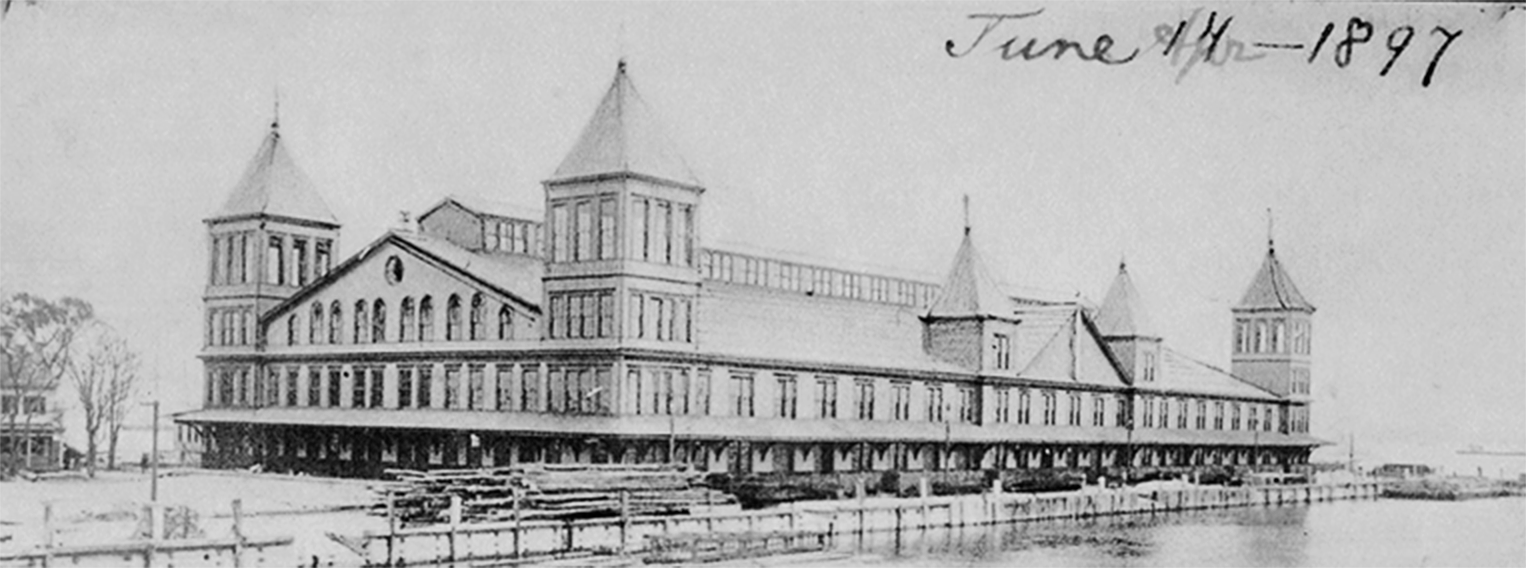Origins of the Federal Immigration Service
The federal government assumed direct control of inspecting, admitting, rejecting, and processing all immigrants seeking admission to the United States with the Immigration Act of 1891. The 1891 Act also expanded the list of excludable classes, barring the immigration of polygamists, persons convicted of crimes of moral turpitude, and those suffering loathsome or contagious diseases.
The national government’s new immigration obligations and its increasingly complex immigration laws required a dedicated federal enforcement agency to regulate immigration. Accordingly, the 1891 Immigration Act created the Office of the Superintendent of Immigration within the Treasury Department. The Superintendent oversaw a new corps of U.S. Immigrant Inspectors stationed at the country’s principal ports of entry.
Federal Immigration Stations
On January 2, 1892, the Immigration Service opened the U.S.’s best known immigration station on Ellis Island in New York Harbor. The enormous station housed inspection facilities, hearing and detention rooms, hospitals, cafeterias, administrative offices, railroad ticket offices, and representatives of many immigrant aid societies. America’s largest and busiest port of entry for decades, Ellis Island station employed 119 of the Immigration Service's entire staff of 180 in 1893.

The Service built additional immigrant stations at other principal ports of entry through the early 20th century. At New York, Boston, Philadelphia, and other traditional ports of entry, the Immigration Service hired many Immigrant Inspectors who previously worked for state agencies. At other ports, both old and new, the Service built an Inspector corps by hiring former Customs Inspectors and Chinese Inspectors, and training recruits.
Implementing A National Immigration Policy
During its first decade, the Immigration Service formalized basic immigration procedures and made its first attempts to enforce a national immigration policy. The Immigration Service began collecting arrival manifests (also frequently called passenger lists or immigration arrival records) from each incoming ship, a former duty of the U.S. Customs Service since 1820. Inspectors then questioned arrivals about their admissibility and noted their admission or rejection on the manifest records.
Beginning in 1893, Inspectors also served on Boards of Special Inquiry that closely reviewed each exclusion case. Inspectors often initially excluded noncitizens who were likely to become public charges because they lacked funds or had no friends or relatives nearby. In these cases, the Board of Special Inquiry usually admitted the noncitizen if someone could post bond or one of the immigrant aid societies would accept responsibility for the alien.
Detention guards and matrons cared for detained persons pending decisions in their cases or, if the decision was negative, awaiting deportation. The Immigration Service deported noncitizens denied admission by the Board of Special Inquiry at the expense of the transportation company that brought them to the port.
Enhanced Responsibilities
Congress continued to exert Federal control over immigration with the Act of March 2, 1895, which promoted the Office of Immigration to the Bureau of Immigration and changed the agency head's title from Superintendent to Commissioner-General of Immigration. The Act of June 6, 1900, consolidated immigration enforcement by assigning enforcement of both Alien Contract Labor laws and Chinese Exclusion laws to the Commissioner-General.
Because most immigration laws of the time sought to protect American workers and wages, an Act of February 14, 1903, transferred the Bureau of Immigration from the Treasury Department to the newly created Department of Commerce and Labor. An "immigrant fund" created from collection of immigrants' head tax financed the Immigration Service until 1909, when Congress replaced the fund with an annual appropriation.
